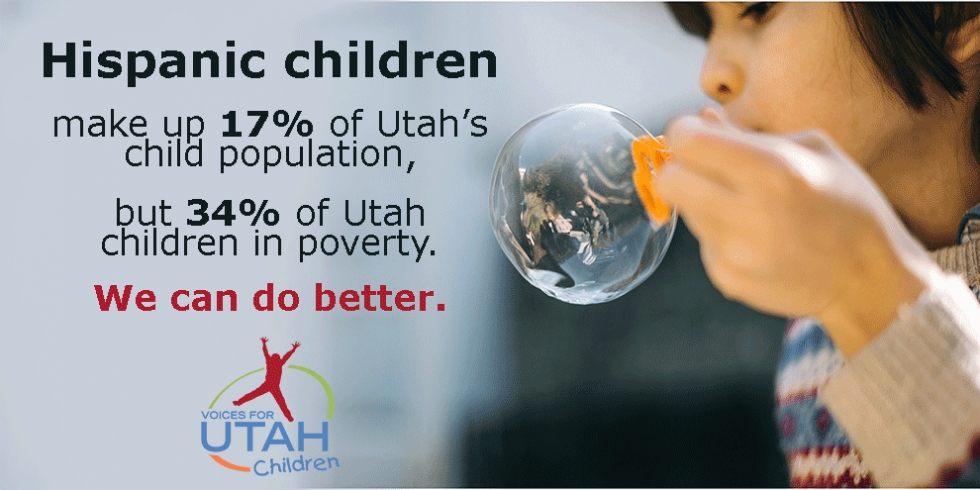Recent Census data show that Utah has made some improvements when it comes to reducing child poverty, but Utah Hispanic or Latino children are still disproportionately experiencing poverty, compared to their White peers.
Looking at the overall poverty rates, Utah children fare better than the rest of the United State, the so-called “Utah advantage”. But the gap between White children and Hispanic children in Utah is alarming: 25% of Hispanic children live in poverty, compared to 9% of White children.
The poverty rate for Utah Hispanic children declined in 2015, while the rate for Utah White children remained relatively stagnant. The poverty rate for Utah children overall stayed at 13%. Although the decline in poverty rates for Hispanic children is encouraging, the gap between White children and Hispanic children is still too wide.
Utah’s 2015 child poverty data underscore the need for an equity review of our programs and policies: Why are some racial and ethnic groups making progress, while other groups stagnate? How do we close the economic divide between Hispanic and White children?
Going forward, politicians and decision-makers need to look at the impact our policies have on children of all racial and ethnic groups, so we can strengthen what’s working and re-evaluate what’s not.
For more information, see Income and Poverty in the United States: 2015.
A closer look at the numbers: Why only White and Hispanic children?
We are sharing child poverty data from the Census Bureau’s American Community Survey. For child poverty rates in Utah, unless multiple years of data are aggregated, statistically-significant Census findings are only available for the following racial and ethnic categories: non-Hispanic White, Hispanic or Latino, and 2 or more races. Unfortunately we do not have data available for all groups of children in our state. As recent Utah Department of Health Office of Heath Disparities reports highlight, disparities affect all children of color in our state. We need more child-specific data, disaggregated by race and ethnicity, so we can understand how policy decisions are affecting all groups of children in Utah.
For 30 years now, Voices for Utah Children has called on our state, federal and local leaders to put children’s needs first. But the work is not done. The children of 30 years ago now have children of their own. Too many of these children are growing up in poverty, without access to healthcare or quality educational opportunities.
How can you be involved?
Make a tax-deductible donation to Voices for Utah Children—or join our Network with a monthly donation of $20 or more. Network membership includes complimentary admission to Network events with food, socializing, and opportunity to meet child advocacy experts. And don't forget to join our listserv to stay informed!
We look forward to the future of Voices for Utah Children and we hope you will be a part of our next 30 years.
Special thanks to American Express, our "Making a Difference All Year Long" sponsor. 






